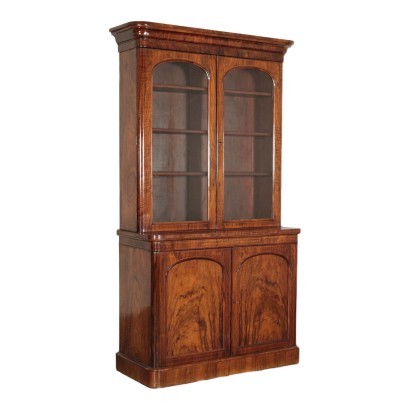Cupboard Walnut Glass Maple Brazilian Rosewood England Late 1800
Features
Age: 19th Century / 1801 - 1900
Origin: England
Main essence: Maple , Brazilian Rosewood , Walnut
Material: Glass
Description
English cupboard with two bodies, with two panelled doors in the lower part, while the upper part has two doors with glass. Walnut, the upper part has maple and Brazilian rosewood threading.
Product Condition:
Fair condition. Wear consistent with age and use.
Dimensions (cm):
Height: 228
Width: 132
Depth: 51
Additional Information
Age: 19th Century / 1801 - 1900
19th Century / 1801 - 1900Main essence:
Maple
Hard, light wood used for inlays. It grows mainly in Austria, but it is widespread throughout the northern hemisphere, from Japan to North America, passing through China and Europe. It is one of the lightest woods ever, tending to white, it is similar to lime or birch wood. The briar is used in the production of ancient secretaires .Brazilian Rosewood
It is a hard, light blond wood, but with strong red and pinkish veins, which is obtained from tropical trees similar to rosewood. Its veins are reminiscent of striped tulips, which is why it is called tulipwood in English-speaking areas. It is used for inlays, often combined with bois de violette. In the 1700s and 1800s it was highly appreciated and used in France and England for precious veneers. It gives off scent for decades if not centuries after curing.Walnut
Walnut wood comes from the plant whose botanical name is juglans regia , probably originally from the East but very common in Europe. Light or dark brown in color, it is a hard wood with a beautiful grain, widely used in antique furniture. It was the main essence in Italy throughout the Renaissance and later had a good diffusion in Europe, especially in England, until the advent of mahogany. It was used for solid wood furniture and sometimes carvings and inlays, its only big limitation is that it suffers a lot from woodworm. In France it was widely used more than anything else in the provinces. In the second half of the eighteenth century its use decreased significantly because mahogany and other exotic woods were preferred.Material: Glass
It could also interest you


























